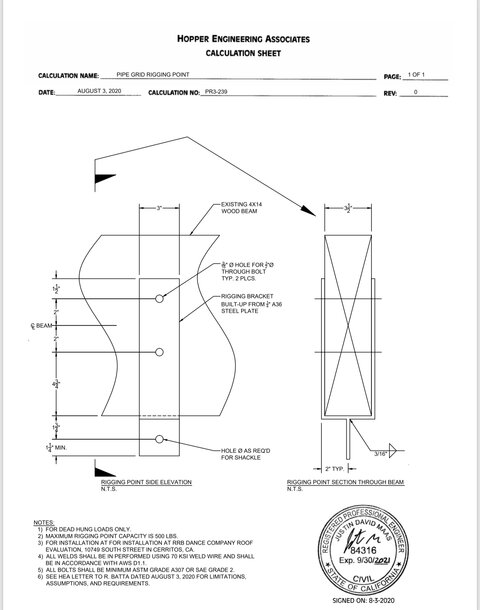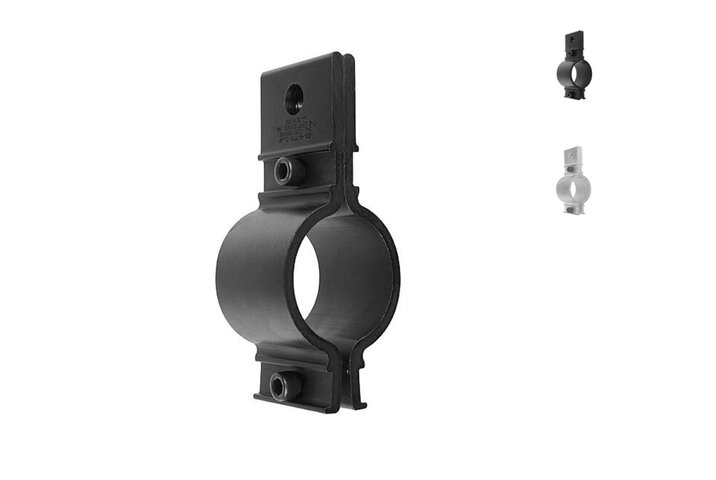one-highlander
Member
Hi guys,
I want to distribute 80 amps (4 electric circuits) in various locations, around a 20' x 20' lighting grid, in such a way that it (the electrical wiring, which will be in EMT, or Flex conduit) doesn't interfere with the pipe itself, and the lighting clamps. How would you do it?
(The long version of the question...)
We have 4 circuits that the building GC left for us in junction boxes in the ceiling. I want to bring the circuits down to the lighting grid (approximately 20' x 20'), and distribute those five circuits around the perimeter. I also see myself using a similar method to put DMX outlets at various places along the grid.
The grid will be about 5 feet below the ceiling, and held by Mega Batten Clamps, which in turn will hanging from 1/8", 7x19 aircraft cable, which is attached to ceiling beams clamps and ceiling beams that a structural engineer has signed off on.
I have a commercial contractor who will do the work, however he hasn't done work in a theater. The last time I had to do something like this, was a few years ago when I outfitted a theater with new LED fixtures. We ran two EMT systems for AC and DMX. and actually attached them to electrics.
In this scenario, I think that electrical should be above the grid (I'm thinking 8-12"), in such a way that it doesn't interfere with how the lighting fixtures clamp on to the pipe.
In a perfect world, I'd sell them something like ETC battens with both electrical and DMX built in, or additional pipe that would allow the EMT to run parallel, but this is a non-rofit that doesn't even know if they will survive COVID. But the project was already underway when it hit.
Thanks!
I want to distribute 80 amps (4 electric circuits) in various locations, around a 20' x 20' lighting grid, in such a way that it (the electrical wiring, which will be in EMT, or Flex conduit) doesn't interfere with the pipe itself, and the lighting clamps. How would you do it?
(The long version of the question...)
We have 4 circuits that the building GC left for us in junction boxes in the ceiling. I want to bring the circuits down to the lighting grid (approximately 20' x 20'), and distribute those five circuits around the perimeter. I also see myself using a similar method to put DMX outlets at various places along the grid.
The grid will be about 5 feet below the ceiling, and held by Mega Batten Clamps, which in turn will hanging from 1/8", 7x19 aircraft cable, which is attached to ceiling beams clamps and ceiling beams that a structural engineer has signed off on.
I have a commercial contractor who will do the work, however he hasn't done work in a theater. The last time I had to do something like this, was a few years ago when I outfitted a theater with new LED fixtures. We ran two EMT systems for AC and DMX. and actually attached them to electrics.
In this scenario, I think that electrical should be above the grid (I'm thinking 8-12"), in such a way that it doesn't interfere with how the lighting fixtures clamp on to the pipe.
In a perfect world, I'd sell them something like ETC battens with both electrical and DMX built in, or additional pipe that would allow the EMT to run parallel, but this is a non-rofit that doesn't even know if they will survive COVID. But the project was already underway when it hit.
Thanks!




